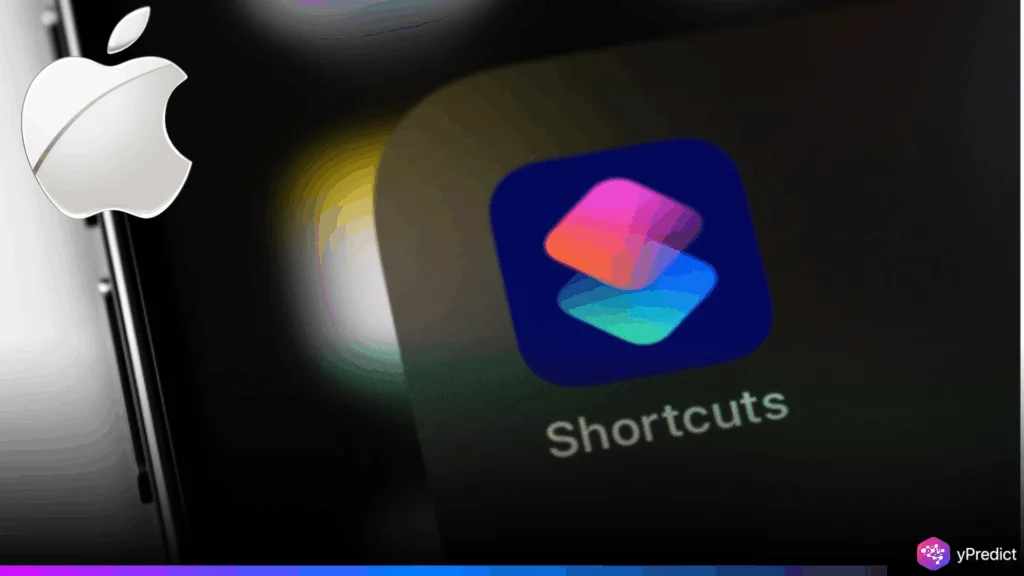
Apple is preparing a major update for its Shortcuts app, introducing AI capabilities through its Apple Intelligence initiative. According to Bloomberg’s Mark Gurman, the overhaul aims to simplify automation using natural language. Originally a third-party app called Workflow, Shortcuts evolved into a powerful Apple tool, but it now lags behind new AI trends. The updated version will let users trigger complex actions with voice or text prompts, like launching apps, adjusting settings, and summarizing calls. The goal is to lower the barrier to automation, especially for users unfamiliar with the current UI. However, the launch may be delayed until 2026.
Natural Language Automation and Powerful Use Cases
The revamped Shortcuts app is expected to feature deep integration with Apple’s AI models. This transforms how users create and run automations. Using natural language, users will soon be able to say things like, “Start a meeting workflow,” and automatically trigger a series of actions, such as enabling Do Not Disturb, launching a video call, taking meeting notes, and drafting a summary email post-call. These voice-activated chains, powered by Apple Intelligence, are designed to simplify task management and increase productivity across iPhone, iPad, and Mac devices. This enhancement aims to bridge the usability gap for those who find traditional automation interfaces too complex.
It also aligns Apple with competitors like Microsoft, whose Copilot+ PCs enable AI-powered system controls. While Apple’s Shortcuts already support powerful routines, the addition of contextual understanding through natural commands could drastically expand usage. This move positions Shortcuts as not just a productivity tool but a smart assistant tailored to users’ daily patterns. Even if delayed, this update reflects Apple’s larger ambition to embed AI models at the system level. Transforming core OS functionality to anticipate and execute user needs more intelligently and intuitively, without requiring complex programming knowledge or pre-built templates.
Broader AI Push, Foundation Models, Siri, and Health
The Shortcuts overhaul is part of Apple’s broader strategy to deeply integrate artificial intelligence into its ecosystem. At WWDC 2025, Apple is expected to open access to its foundation models, comprising three billion parameters, to third-party developers. These models already handle tasks like text summarization on devices and are set to support more powerful, on-device AI applications. This provides app developers with the chance to use Apple’s AI resources, which allows them to design better, faster, and more protected software without needing cloud servers. Because Apple makes AI available on local devices, privacy is highlighted in its AI strategy.
Other AI-powered updates in the pipeline include a more conversational Siri, thanks to large language models (LLMs). Putting it in competition with ChatGPT and Gemini’s voice assistants. Apple is also working on a virtual health assistant called “Mulberry” and an upgraded Health app, expected in the iOS 26 spring update. These features signal Apple’s commitment to AI that enhances real-world utility, from managing workflows to improving healthcare outcomes. The AI-enhanced Shortcuts app is just the beginning, with Apple Intelligence set to become a foundational layer in how users interact with the entire Apple ecosystem.
Timeline and User Expectations
While the new Shortcuts features were expected in 2025, Apple may delay the public release until 2026. According to Gurman, Apple might preview the AI upgrades during the June 9 WWDC keynote. But it might hold back full deployment until the tools are polished. Early versions could reach developers first, offering limited access to foundation models. This measured rollout underscores Apple’s cautious, privacy-focused AI strategy. Despite the delay, the upcoming Shortcuts overhaul reflects Apple’s long-term commitment to smarter automation. For users, the update promises more power, less friction, and a new era of natural, AI-driven interactions across Apple devices.






